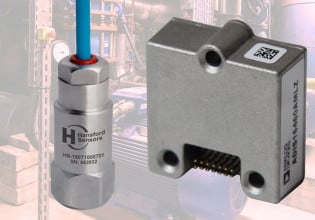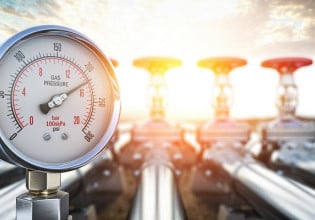A
There are a lot of good information that I picked up looking at the discussion on S7-200. I would like to know in term of the accuracy of the system to measure temperature of water between 0 degC to 40 degC, such as how much is the A/D bit and what kind of temperature sensor it can take. What good is a PLC if all the data are inaccurate ? can anyone address these issues on a S7-200 or S7-300 ?
Michael Griffin wrote:
> At 02:37 29/04/00 +0200, roger Irwin wrote:
> <clip>
> >> - Removable terminal blocks (except on the lowest end CPU).
> >
> >221 is the lowest, but also the 222 (small but expandable with modules)
> >and some modules do not have this facility.
> <clip>
> Actually, they have added removable terminal blocks on the CPU and
> I/O I have used, but they are not very good ones. They are very hard to
> remove. I was able to pull out the terminal blocks from the I/O modules, but
> I gave up trying with a 224 CPU because I was afraid I would damage it. I
> think Siemens needs to try this again.
>
> >> There is no point in describing what is different about the new
> >> programming software; very little is the same as the old version. For
> >> example, you move between subroutines by clicking on tabs instead of by
> >> scrolling down the screen.
> >
> >This is what I meant by pretty! I would point out that I am using 3.0.2, not
> >4, but I do not believe 4 has that many differences (but maybe some if the
> >bugs have been fixed).
>
> Sorry, the '4' was my mistake from poor typing. I'm using version 3,
> which is the latest. I understand there is a version 3.2 coming out soon.
>
> >Things about this software that make it a burden for serious development are:
> >
> >- Subs and Ints may not be given symbolic names, you must always call 'n'
> >not call <name>
>
> I believe I'm using the same version that you are, and I can give
> subroutines symbolic names and call them by that name (I haven't had any
> need yet for interupt routines, but they may be the same). If I recall
> correctly, you select the subroutine from the tree diagram on the left.
...<remainder of long post clipped>
Michael Griffin wrote:
> At 02:37 29/04/00 +0200, roger Irwin wrote:
> <clip>
> >> - Removable terminal blocks (except on the lowest end CPU).
> >
> >221 is the lowest, but also the 222 (small but expandable with modules)
> >and some modules do not have this facility.
> <clip>
> Actually, they have added removable terminal blocks on the CPU and
> I/O I have used, but they are not very good ones. They are very hard to
> remove. I was able to pull out the terminal blocks from the I/O modules, but
> I gave up trying with a 224 CPU because I was afraid I would damage it. I
> think Siemens needs to try this again.
>
> >> There is no point in describing what is different about the new
> >> programming software; very little is the same as the old version. For
> >> example, you move between subroutines by clicking on tabs instead of by
> >> scrolling down the screen.
> >
> >This is what I meant by pretty! I would point out that I am using 3.0.2, not
> >4, but I do not believe 4 has that many differences (but maybe some if the
> >bugs have been fixed).
>
> Sorry, the '4' was my mistake from poor typing. I'm using version 3,
> which is the latest. I understand there is a version 3.2 coming out soon.
>
> >Things about this software that make it a burden for serious development are:
> >
> >- Subs and Ints may not be given symbolic names, you must always call 'n'
> >not call <name>
>
> I believe I'm using the same version that you are, and I can give
> subroutines symbolic names and call them by that name (I haven't had any
> need yet for interupt routines, but they may be the same). If I recall
> correctly, you select the subroutine from the tree diagram on the left.
...<remainder of long post clipped>






